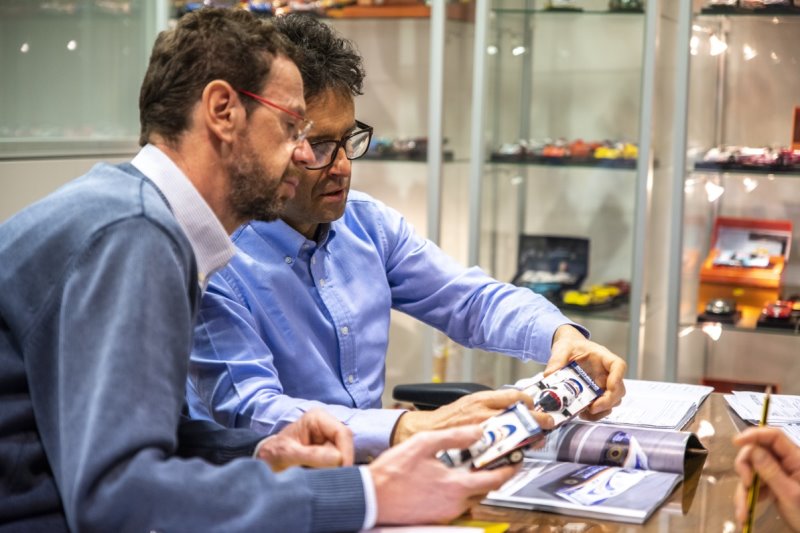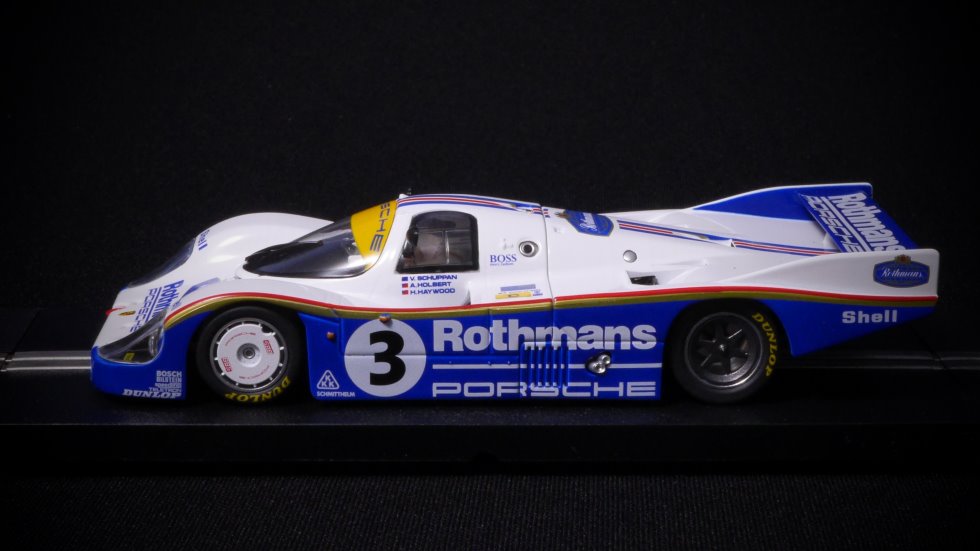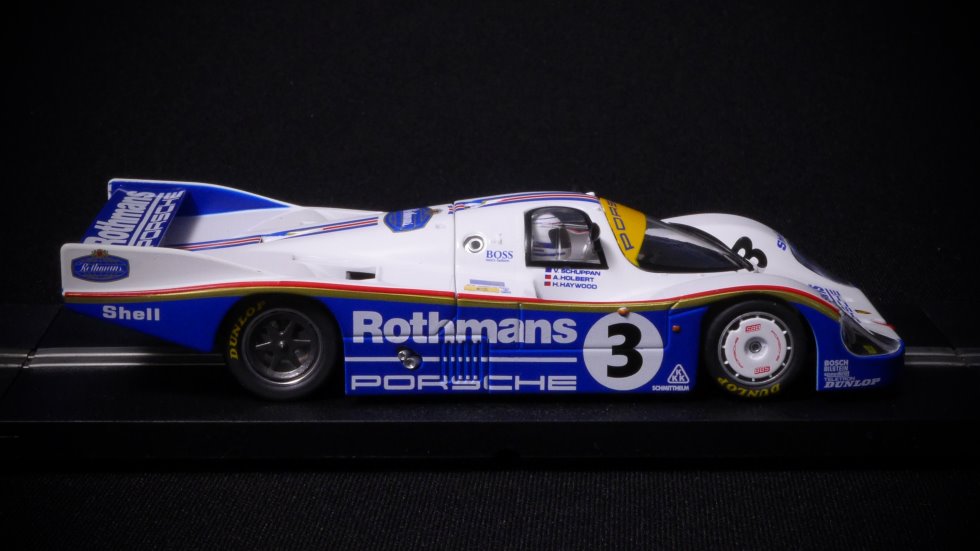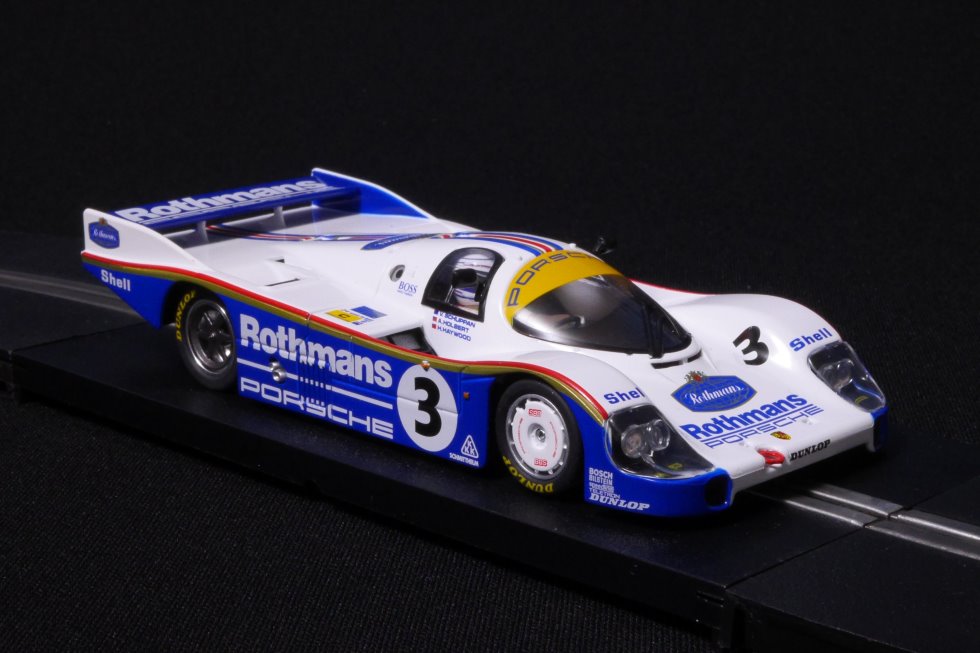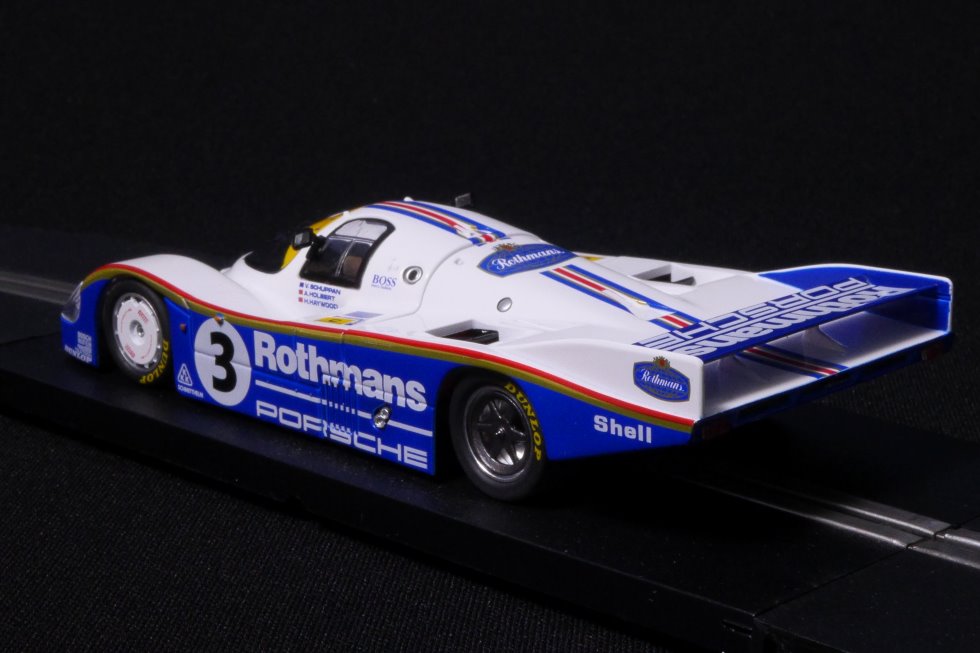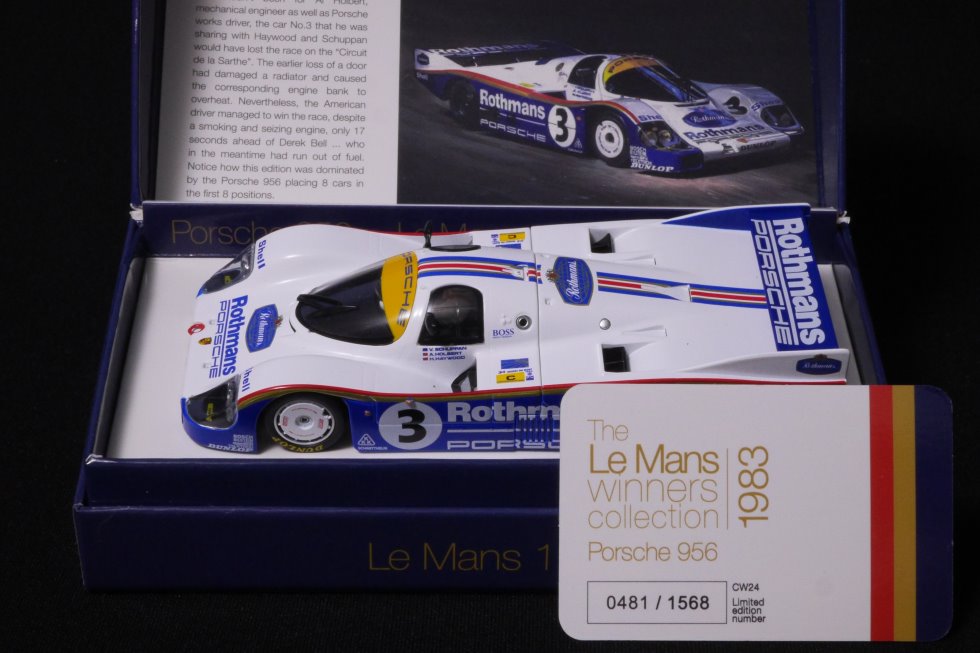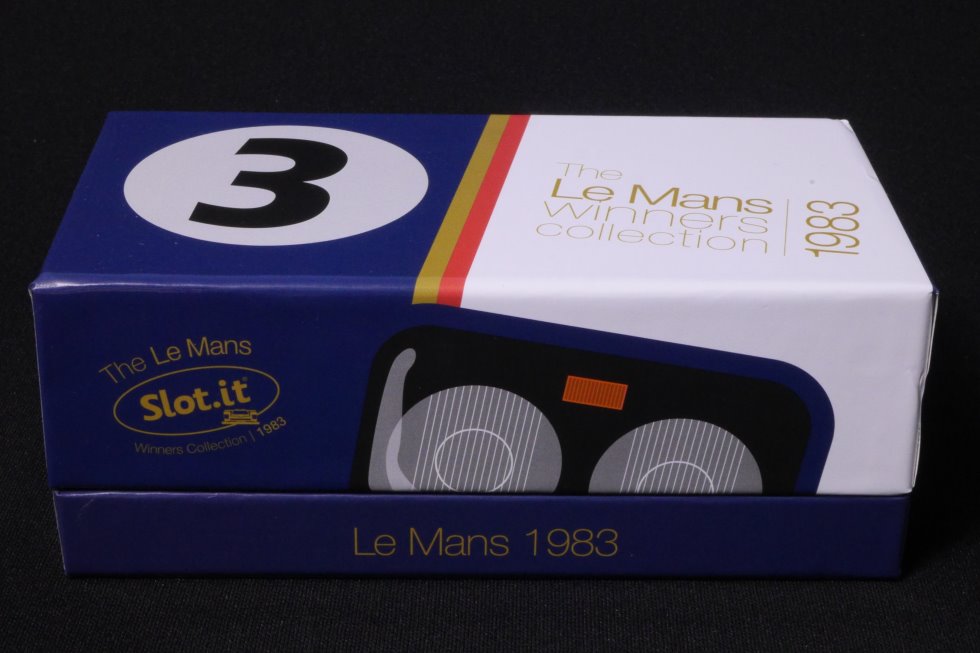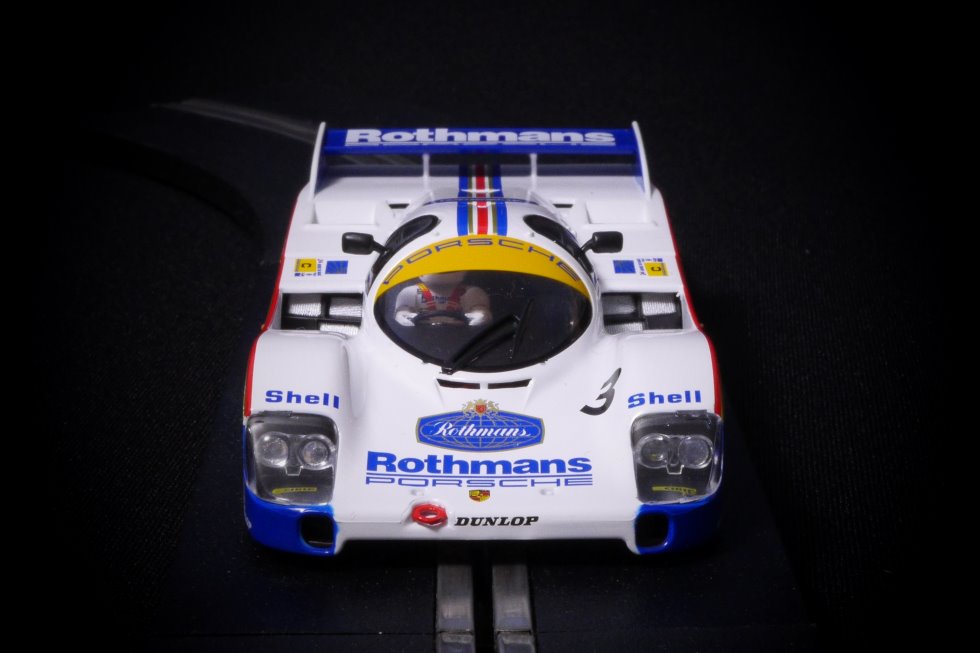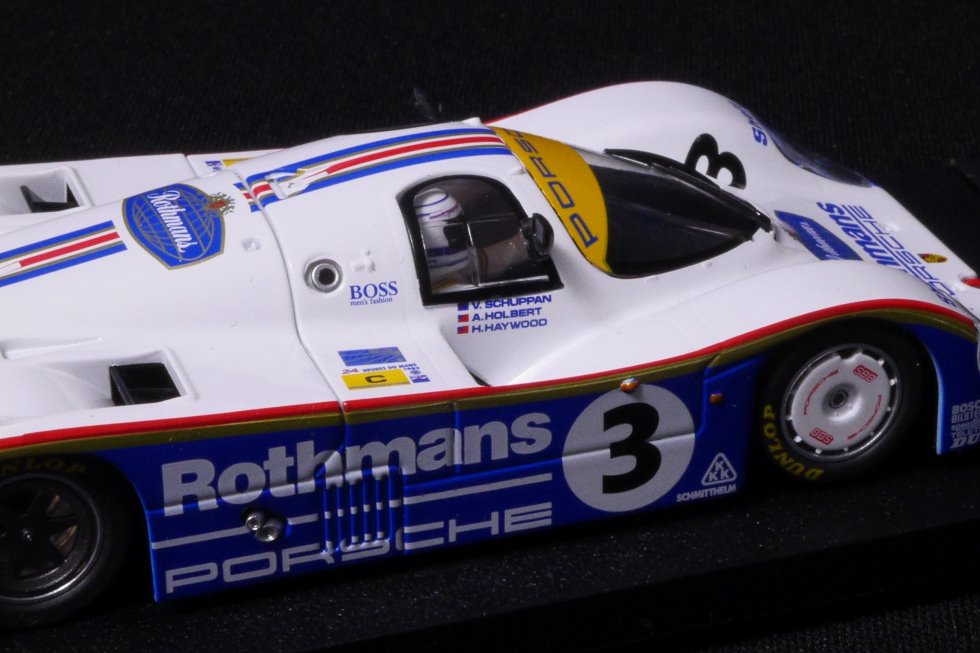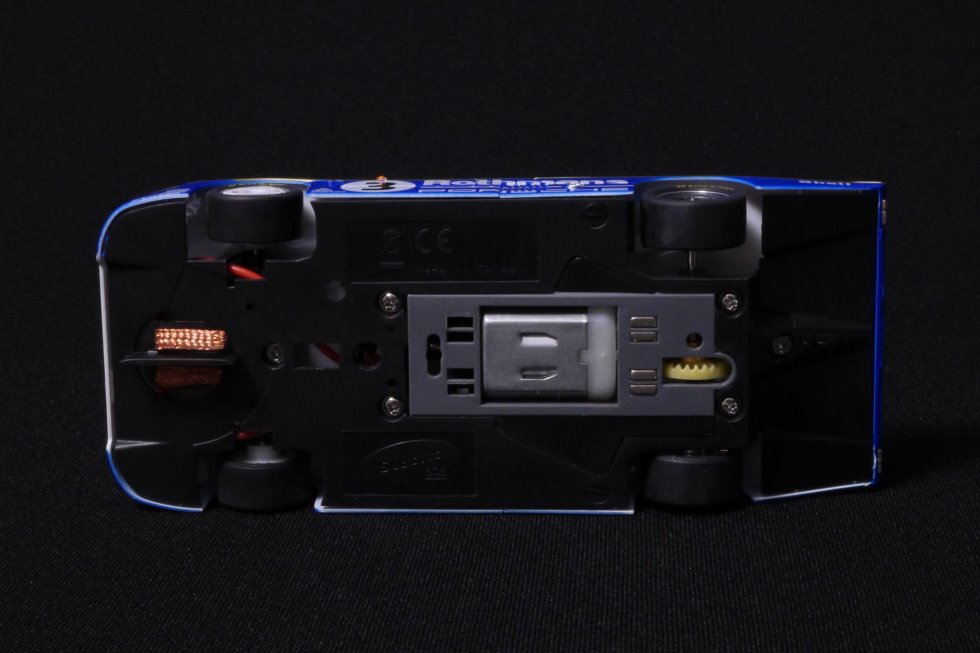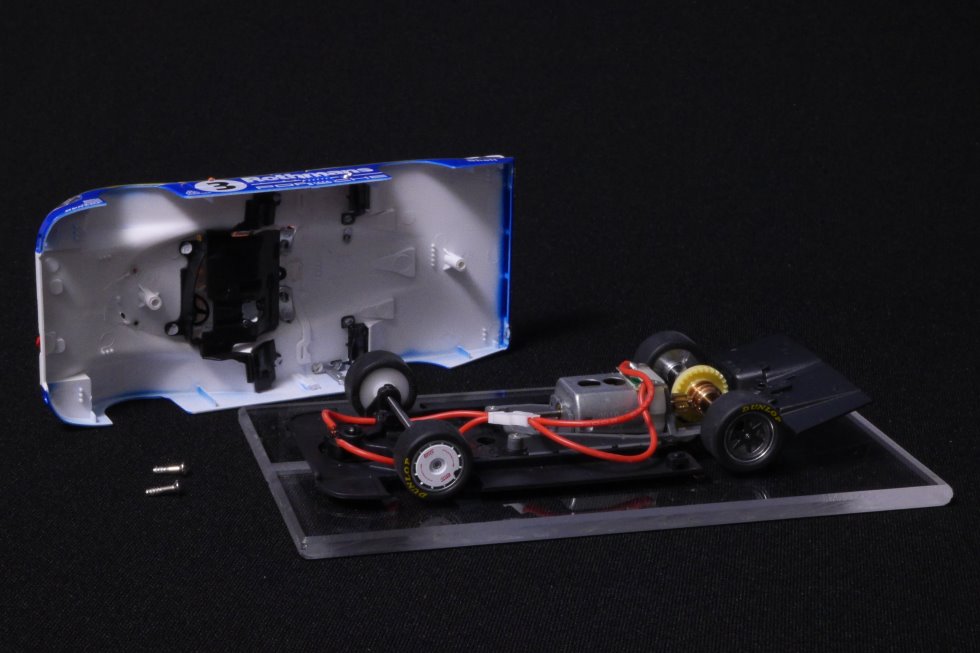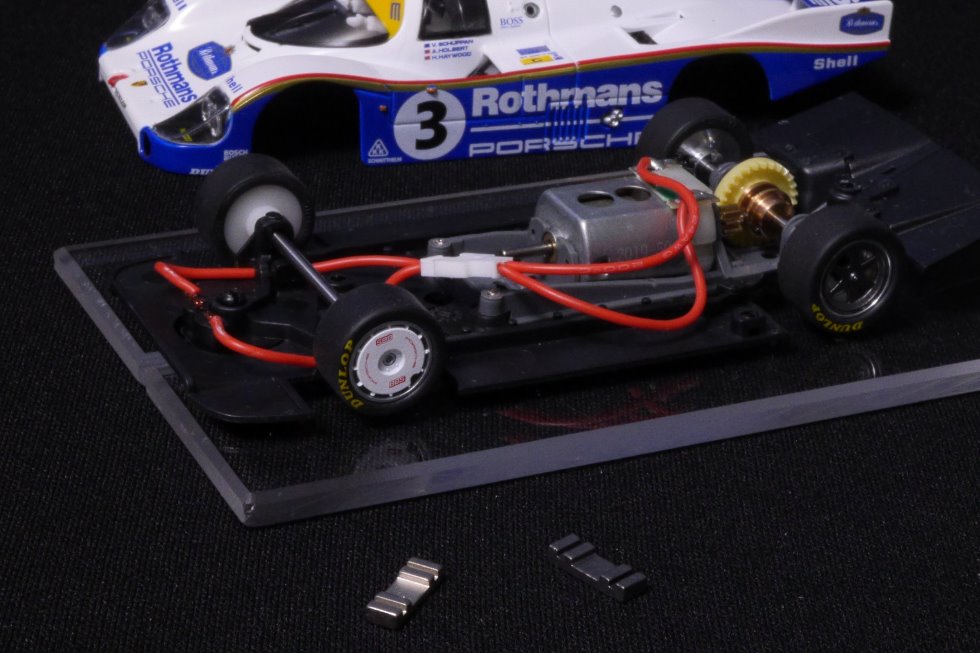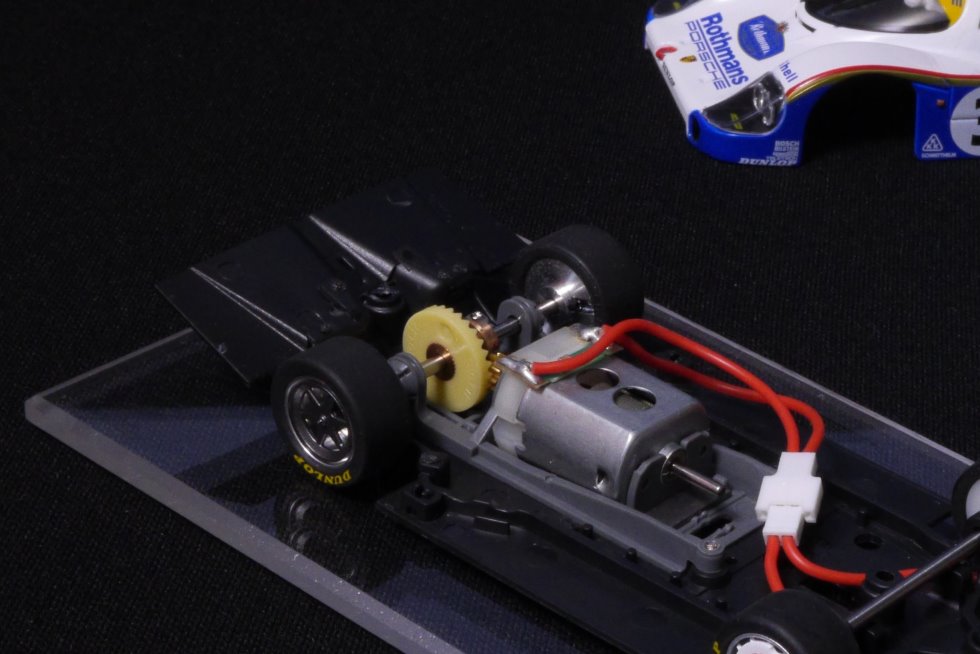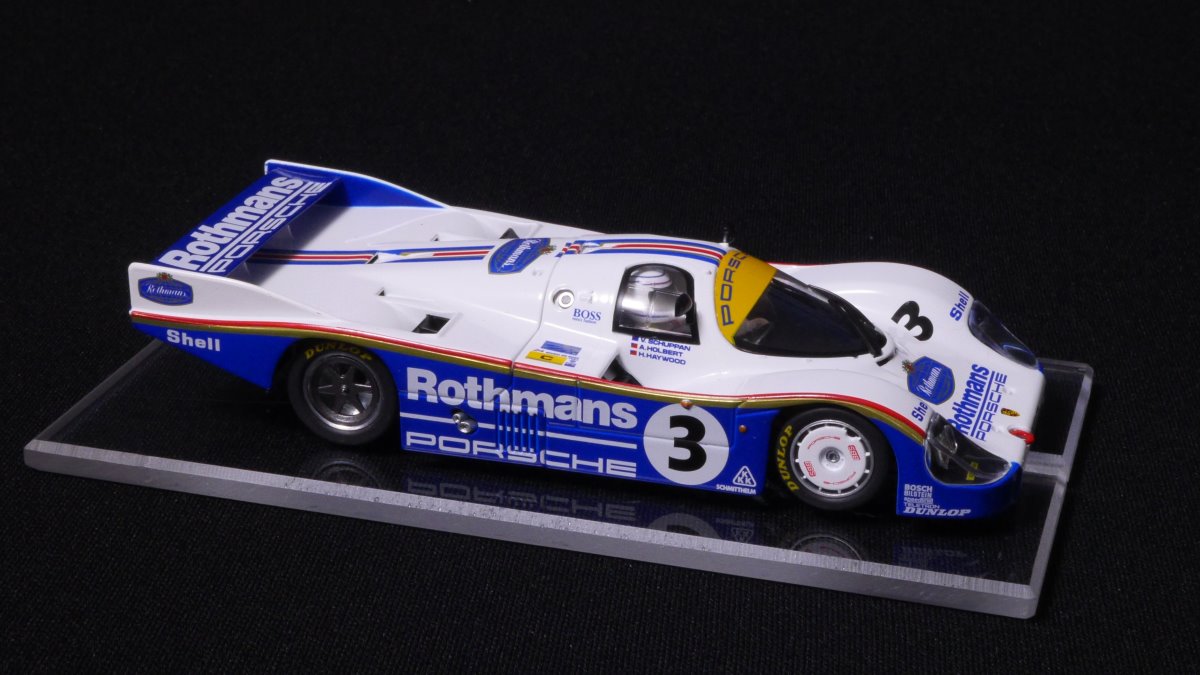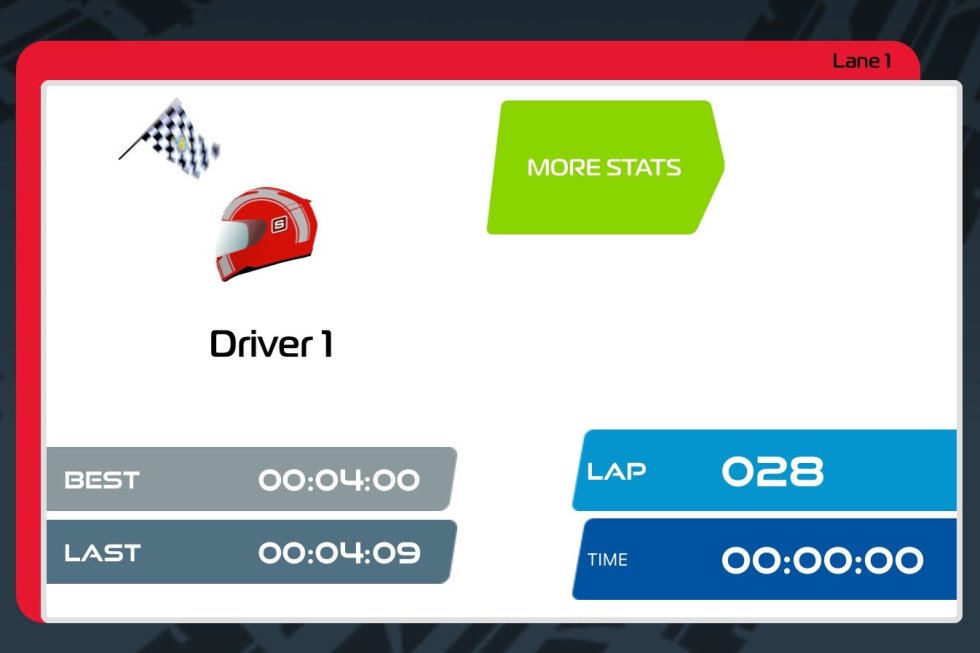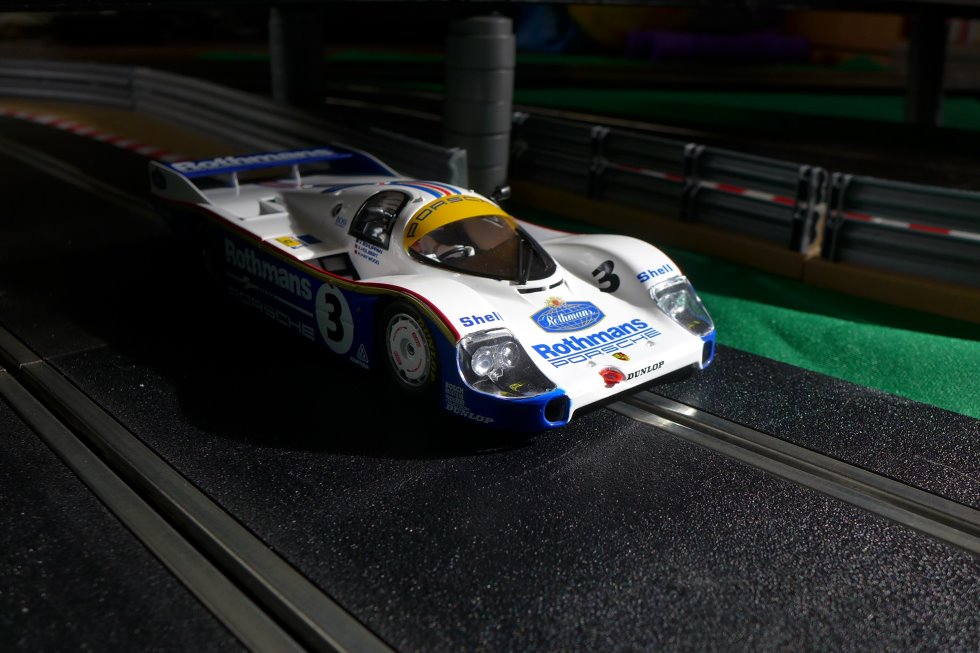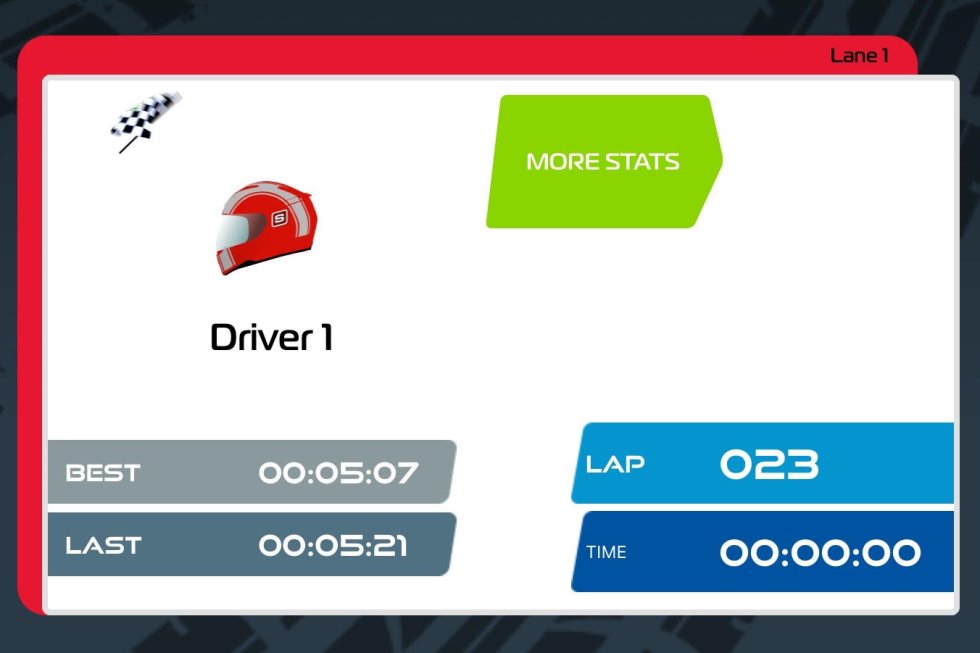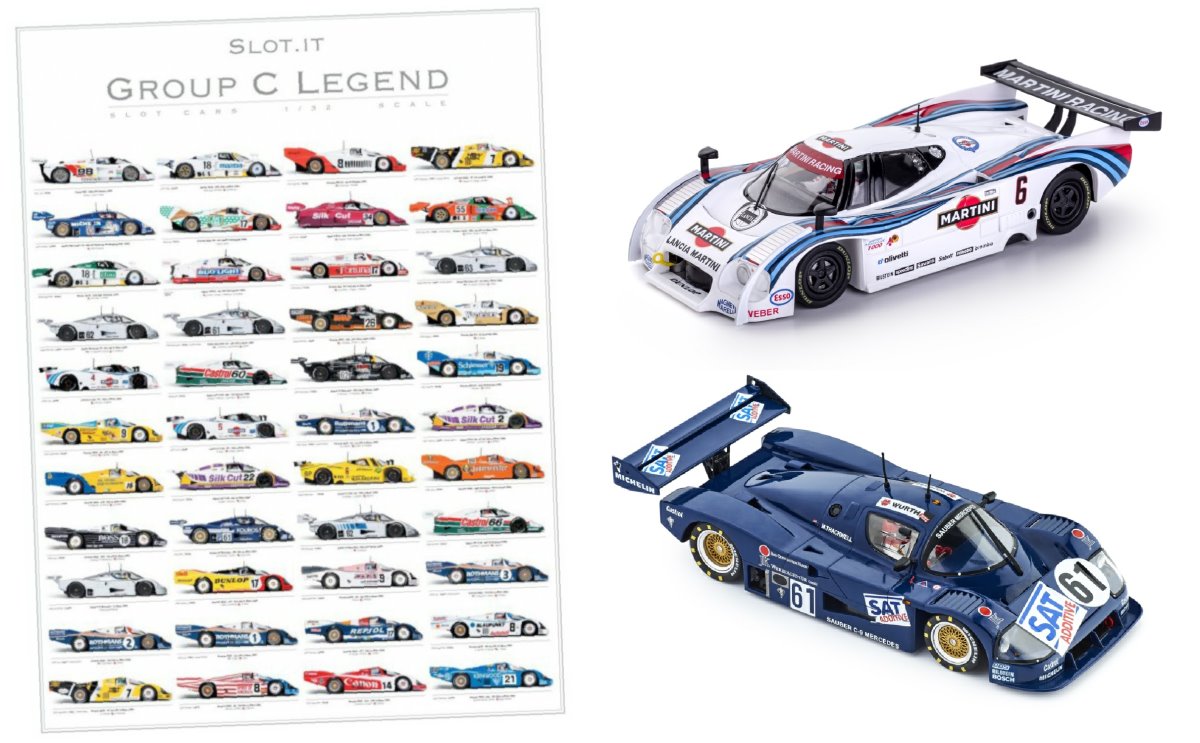The fourth instalment of our performance slot cars series looks at a Slot.it model…
After a brief overview, I’ve been focusing on one model each from NSR, Policar and Slot.it. The three cars I’ve chosen are – I think – good introductions to the brands. Each is suitable for Scalextric home tracks and they will be competitive at slot car clubs around the world. However, their performance won’t be too challenging for those of us more used to standard Scalextric cars. You can read the previous posts in this series here: https://blog.jadlamracingmodels.com/tag/performance-slot-cars/
The Slot.it car I’ve chosen is pretty special for lots of reasons. The Porsche 956 is one of the most iconic Le Mans racers and this new release is the final Porsche in Slot.it’s ‘Le Mans Winners’ limited edition series. If you like the look of this car, I’m afraid they’re selling out fast. However, there is a good selection of the latest Slot.it models on the Jadlams website: https://www.jadlamracingmodels.com/scalextric-slot/cars/
Who Are Slot.it?
Slot.it cars and accessories are produced by Galileo Engineering, a small Italian company based in Reggio Emilia. Founded in 1998 by Maurizio Ferrari and Maurizio Gibertoni, slot cars have become an increasingly important part of the business. Former F1 engineer Maurizio Ferrari has become the face of Slot.it internationally. His – and the company’s – philosophy is to produce performance slot cars that are both sumptuous scale models and the fastest on the track.
Speaking to Slot Car Today in 2012, Maurizio said “For us, competition in the market is a result of competition on tracks. However… we are not going to alter the car design for the sake of speed. I firmly believe, and our latest cars prove it, that we can make cars that look like the real car and are at least as fast as anyone else’s.”
In terms of appearances, Slot.it cars look as good as – if not better – than Scalextric models. Add plenty of high-quality mechanical components and you really have the best of both worlds, as we saw with stable mate Policar’s Lotus 72. Although not as big a range as Scalextric, there are plenty of models to choose from, with 2-3 new models and a dozen or so re-liveries added each year.
The price of a Slot.it model is closer to Scalextric than NSR, so these performance slot cars are great value. Plus there’s a vast range of spares and performance parts – including body parts – to keep your Slot.it cars looking great and performing perfectly on track.
One of the pillars of the Slot.it range are the 1980s Group C sports cars, of which the Porsche is a wonderful example. Continuing with the Le Mans theme, there are 2000 and 2010s LMP cars, Classic 60s & 70s sports cars, plus Classic 1990s DTM and saloon cars and a new Modern GT category. It’s not surprising that these fit into the classes of slot car clubs around the world – Slot.it have defined ‘hard body’ club racing for much of the past twenty years.
Slot.it also produce a very well-regarded premium hand controller – the SCP. The latest version, the SCP3, is designed to work out of the box with Slot.it’s oXigen digital system and can also be used with ARC Air and ARC Pro. I’ll take a look at the SCP3 and at the oXigen digital system in future blog posts. The SCP3 is available here: https://www.jadlamracingmodels.com/slot-it-scp3-electronic-wireless-controller-1-32-scp301a/
The Real Porsche 956
The Porsche 956 is arguably the greatest racing car of all time. It won four Le Mans 24 hours in a row, plus twenty-two championships and a total of 75 victories in 108 races over five seasons. It’s successor – the 962 – added another thirty-five championships and 143 wins in ten years, including three more at Le Mans. The 956 single-handedly saved Group C, dragging international sports car racing into a new age of fuel efficiency and ground-effect aerodynamics. The car was quick, beautiful and captured the public’s imagination. It is simply an icon of motorsport.
Porsche entered their brand new car into the 24 hours of Le Mans in 1982. It was only the car’s second competitive outing, yet the three works 956s finished first, second and third – a hugely impressive achievement in a gruelling race. The following year, Porsche returned with three more Rothmans-sponsored 956s, along with eight privately-entered cars.
The works cars were – of course – the fastest of the bunch. However, the leading 956 of Mass, Bellof and Barth retired when its engine blew with less than three hours to go. That left the sister cars of Holbert-Haywood-Schuppan and Ickx-Bell out front. Both had been in the wars. Journalist Brian Laban summed it up nicely in his history of Le Mans…
“Their problems balanced out: the winner had lost a door, lost oil pressure, and had finally lost its engine just yards after the finish; the second car (which Ickx started from pole) had hit one of the private 956’s on the Mulsanne on the second lap, was delayed by electrical problems out on the circuit on Sunday morning, and with fuel restrictions could never push quite hard enough to make up, by barely a minute.”
In fact, Holbert nearly didn’t make it to the end. He had to re-fire the engine on the final lap, with Bell having un-lapped himself just before. The timekeepers scored the gap at just 17 seconds, the number 3 Porsche limping over the line with ominous smoke trailing behind. It was a second Le Mans win for Hurley Haywood and a first for American Al Holbert and Australian Vern Schuppan. Both Haywood and Holbert would go on to win the 24 hours three times. Behind them, the top eight finishers were Porsche 956s.
The Slot.it Model
The Slot.it Group C range goes way back to the early years of the company – and the Porsche 956 was the first to be released. Legend has it, Ross Brawn encouraged Maurizio Ferrari to focus on the Group C cars. Maurizio told Slot Car Today “When the Slot.it Porsche 956 became available it could be raced like a real Porsche 956 – flat out. This created a lot of enthusiasm among racers my age – people who actually watched real Group C races. Finally, the Le Mans years between 1982 and 1993 could be recreated and raced properly.”
Over the past 20 years, Slot.it have produced long and short tail versions of the Porsche 956, long, short and IMSA versions of the 962; the Jaguar XJR6, 9, 10 and 12; Sauber C9; Toyota 63C, 86C and 88C; Nissan R89C, R90V and R91VP; Mazda 787B; plus the Lancia LC2/84 and LC2/85. And I may have missed a couple! Getting on for a hundred different liveries from European, North American and Japanese series have been produced, including limited edition releases of Le Mans winners from 1982 to 1991.
This 1983 Le Mans winning 956 is the last of the Porsche winners to be produced by Slot.it. It comes in a lovely collectors’ box with a numbered card. This is a particularly special car for me – I remember the race well and the official poster of the 1983 event has hung on my office wall for the past ten years. The Slot.it model is beautiful – capturing the simplicity of the 956’s lines and the legendary Rothmans livery.
Although the 956 is a relatively old model, the mould has been regularly improved over the years – the body is now incredibly light, giving a perfect balance of performance and detail. It’s worth mentioning the wing mirrors are not glued and can be removed with gentle wiggling – they clip into holes at the front of the side windows. You’ll want to keep them for display, but maybe not for hard racing. However, if you lose or break the mirrors, spares are available. Slot.it produce replacement detailing and clear plastic parts for all their cars. Some models also have optional robust ‘crashproof’ parts – including for the Porsche 956 and 962 Group C cars. A special lightweight polycarbonate interior is an option for serious racers.
The Mechanical Stuff
The high-detail and lightweight body is attached by just two screws – one front and one back – and there are washers underneath to protect the chassis. There are upgrades available for the screws, but these standard ones are perfectly good – with no thread under the head, they allow very good body float.
Inside, there is a flat two-piece chassis – with the rear diffuser part of the chassis. The rectangular motor ‘pod’ is common to all Slot.it cars – there are several versions, which I’ll mention in a moment. The main piece of the chassis holds just the front axle, guide and body. By loosening the screws on the motor pod, the pod and main chassis become decoupled, improving handling on most tracks.
The motor pod in the Porsche holds the S-Can motor in line with the chassis. Other pods are available which would place a long-can motor in-line, a long-can motor as an anglewinder or an S-Can motor in a sidewinder orientation. All these pods would fit the Porsche chassis – although there are four removable chassis pieces that would need to be unclipped for the anglewinder pod. The relatively small neodymium traction magnet fits in the pod – either to the front or rear of the motor. The magnet can be replaced with a identically-shaped tungsten weight – available here – for non-mag racing.
The pod is grey in colour, denoting it is a ‘0.5mm offset’ version. This means the axle is 0.5mm higher in the car so the 16.5mm diameter wheels keep the bottom of the chassis nice and low. A black pod is 0.0mm offset – ideal for 15.8mm wheels – and the translucent white pods are 1.0mm offset – ideal for 17.3mm wheels. We’re talking fractions of a millimetre here – but these marginal gains matter in a performance slot car.
You’ll notice the axle bearings are enclosed in the motor pod – there is no chance of them ‘popping out’ in a crash. The bearings are also spherical, meaning they adjust to hold the axle perfectly straight with minimum friction. Also on the rear axle, you’ll find aluminium wheel hubs and a plastic crown gear with a bronze boss. This yellow 28-tooth crown is the standard gear for all Slot.it in-line cars.
Other sizes of in-line gear are available – from 23 up to 32-teeth – and there are also lighter versions with an aluminium boss, plus a range designed to work perfectly with the 1.0mm offset pods. If you want to experiment with the inline gears, the GIX1 ‘mixed pack’ has five of the most common sizes. Anglewinder and sidewinder pods require different gears. Out-of-the-box, the Slot.it LMP cars are anglewinder, Classic and Modern GT sidewinder, Group C and Classic DTM model are in-line.
The standard motor in Slot.it Group C cars is the MX16 S-Can. Although it looks a bit like a Scalextric motor, it is much more powerful – higher speed and lots more torque. At 12 volts, it will run at 23,000 rpm and give 170gcm of torque – making it slightly more powerful than the NSR motor we looked at in Part 2 of this series. The MX16 is also the standard motor for Slot.it’s Classic sportscar range – direct competitors to the NSR Porsche 908/3.
Fitted to the motor is a PI09 9-tooth brass pinion. The cable soldered to the motor is the new SP45 version with a connector between motor and the pick-up braids. This connector allows a suitable Slot.it digital chip to be installed without any soldering being necessary. The chips that are fitted with the connector are the SP43 Carrera Digital digital chip and the latest versions of the SP15B Scalextric Digital chip. I suspect future versions of the O201C universal chip (Scalextric, Carrera and oXigen) will also have these connectors.
At the front of the car, there are plastic wheels on the axle – the axle height is fixed by two removable plastic holders. If removed, grub screws can then be used to adjust the axle height. The standard clip-in guide blade is fitted with SP19 copper braid, attached to the cables with grub screws. These Slot.it M2 size grub screws are the same as those used to fix the rear wheels in place and adjust the height of front axle – an M2 allen key and spare screws are included with the car. This method of attaching the braids and cable is very secure, but can fray the braids and weaken the cable if the screws are repeatedly loosened and tightened. The cable is routed through holes in the chassis so they do not interfere with the front axle.
Finally, a quick word about the tyres. The standard tyres are Slot.it’s C1 compound and should be perfectly fine for Scalextric and other plastic tracks. However, there are other compounds available. I find the P6 tyres have more grip on Scalextric Sport track. The equivalent size of tyre in P6 compound are the PT24 tyres (available here) – these are ideal for the rear wheels. The C1 tyres are fine on the front – or you could fit zero-grip versions such as the low-profile PT19 tyre (available here).
The Slot.it website (http://slot.it/) has a page for each of the recent and forthcoming cars. At the foot of each page is a diagram outlining the body parts and mechanical spares available for the car, plus a pdf brochure and photo gallery. Unfortunately, tune-up parts aren’t specified, but there is a full catalogue in the ‘Spares’ section of the website.
Preparation
Slot.it cars are manufactured and assembled in China, so there’s always a risk of the occasional error slipping past quality control. Look out for the rear wheels being incorrectly spaced or loose. It’s also worth checking that tyres aren’t rubbing on the chassis or body. This Porsche was perfectly assembled.
Like other performance slot cars, the Porsche did not arrive smothered in grease. Before running the car, I put a tiny drop of oil on each end of the motor shaft, a larger drop on the pinion gear and a drop each side where the axle goes through the brass bushing on the motor pod. I then rolled the rear tyres to work the oil in.
As I mentioned, the wing mirrors come off very easily, so I removed those and put them in a safe place. I also loosened off the body screws just a half turn. I kept the magnet fitted for the initial few runs, but had a SP23 tungsten ballast weight (available here) ready for non-mag action – which is what a Slot.it car is designed for…
Track Performance
I started by running the Porsche with the traction magnet fitted. Positioned just behind the motor, this will give the relatively weak magnet maximum effect. I didn’t find the car particularly smooth to drive – although I’m not sure I gave it quite enough welly to overcome the magnet. This is a beautiful limited edition car and I didn’t want to acquaint it with the scenery at high speed. Anyway, two minutes around the Jadlam SL6 test track saw a score of 28 laps and a best time of 4:00 seconds. Not too shoddy for driving cautiously…
Of course, these performance cars are designed for non-magnet running. Even on the tight and twisty SL6 layout, the car was a joy to drive once the magnet was removed. I usually fit a little ballast to my non-mag Slot.it cars – and the SP23 tungsten weight is a direct replacement for the magnet. I prefer it fitted in the pocket just in front of the motor – that extra 2.5 grams is perfect. With the tungsten weight installed, I got into a smooth non-mag driving rhythm and banged in 23 laps and a best of 5:07 seconds – which is easily the best non-mag performance on the SL6 so far.
The Slot.it Group C cars – the Porsches, Lancias, Toyotas, Sauber, Jaguars, Mazda and Nissans – are stunningly beautiful scale models that make superb non-mag home racing cars. They are also a very common sight at slot car clubs around the world, either in a Group C class or a more general ‘Classic Le Mans’. Every slot car enthusiast should have at least one in their collection.
Slot.it Porsche 956C LH #3 “Rothmans Le Mans 1983 Winner” Data Sheet
Catalogue code: CW24
Range: Slot.it Group C / Slot.it Le Mans Winners – 1/32 scale, high detail
Released: May 2021
Spares included: grub screws, allen key
Lights: None
Motor: Mabuchi S-Can 23k rpm in-line orientation.
Gear ratio: 9:28
Length: 146mm
Wheelbase: 84mm
Rear axle width: 62mm
Height: 32mm
Weight: 67g (body: 18.25g)
Andy’s downforce gauge: 22g



